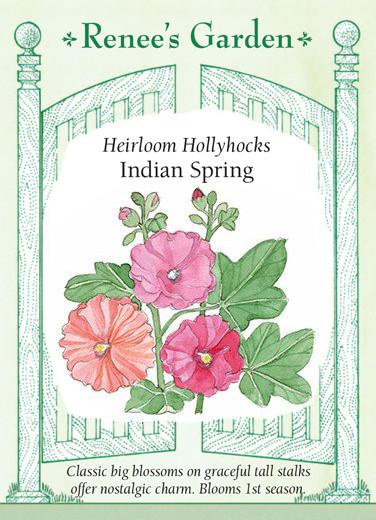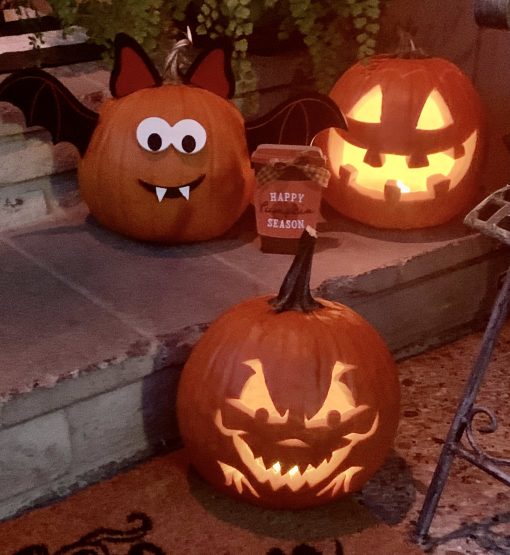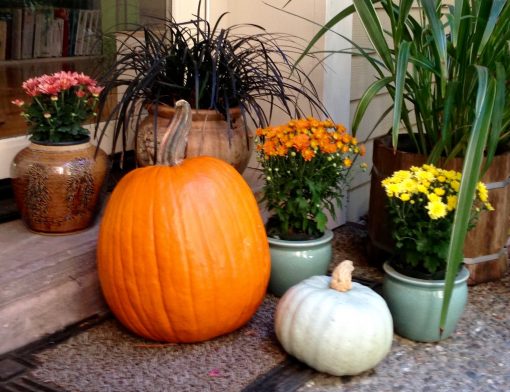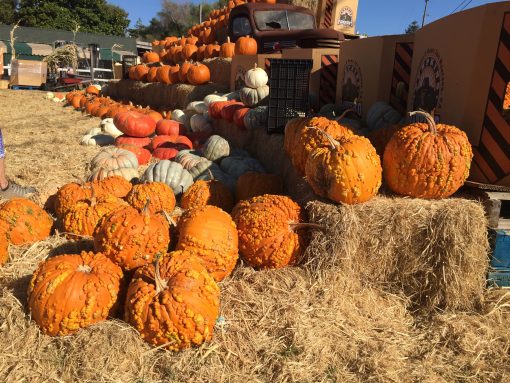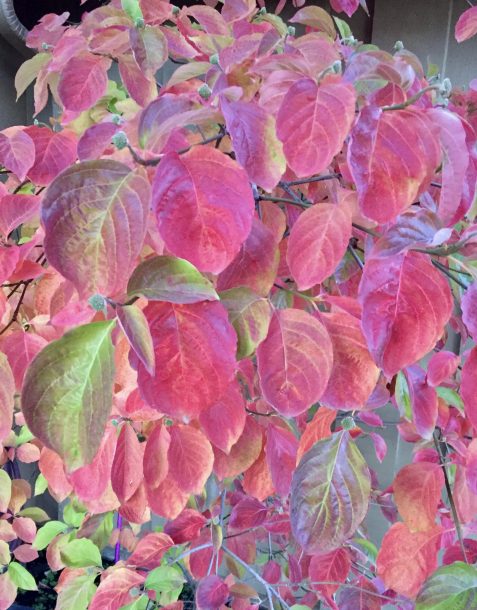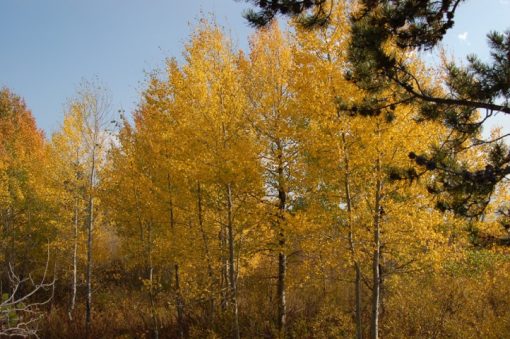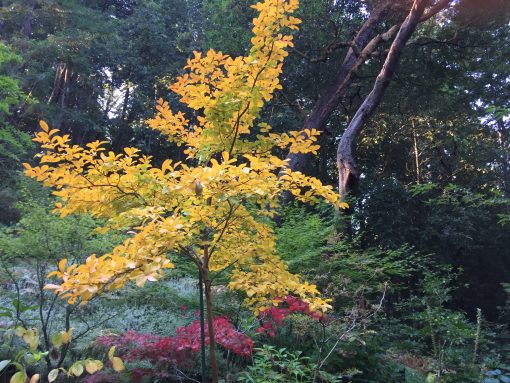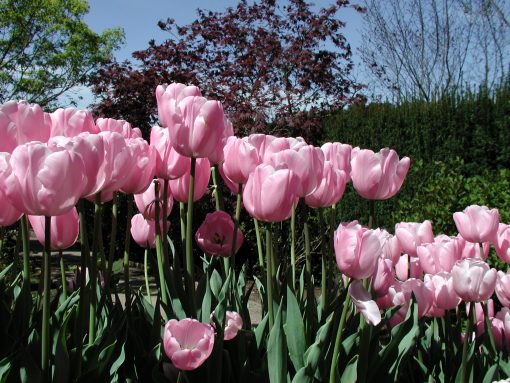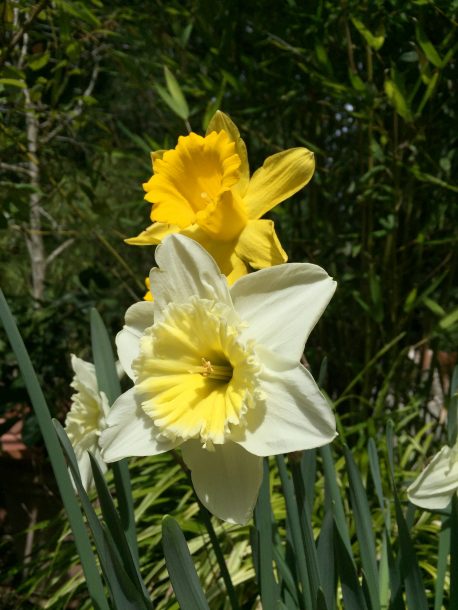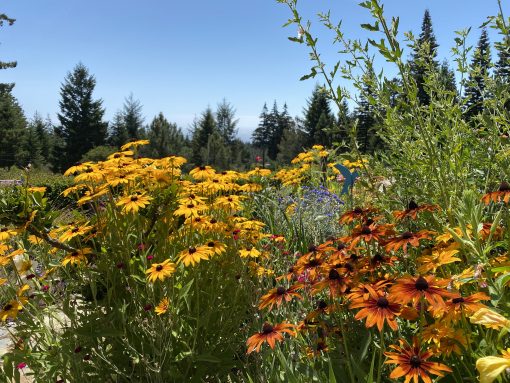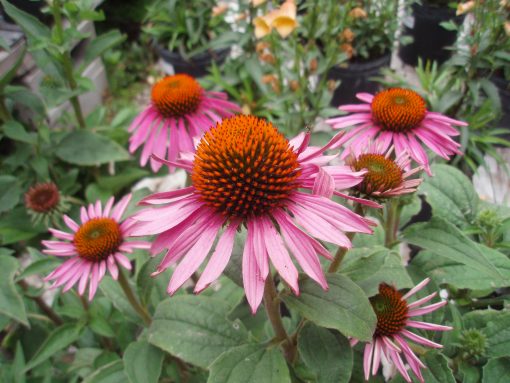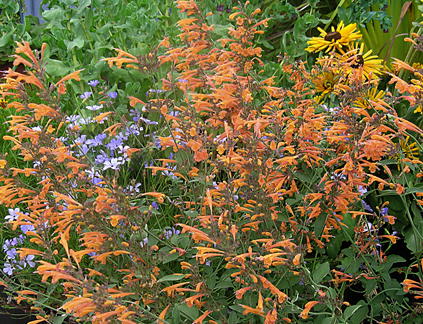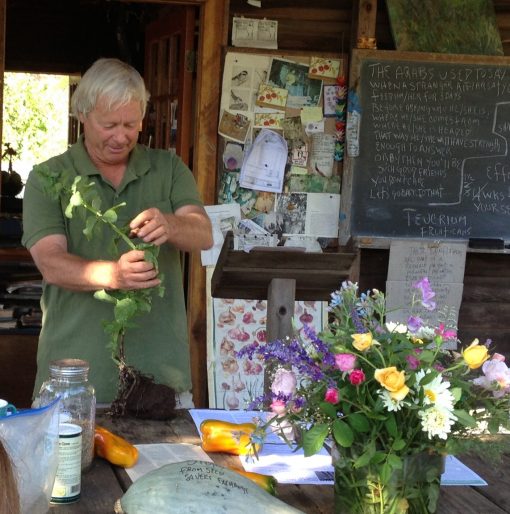
extensive root structure of bell beans. Photo from 2013.
Every time we get a bit of rain I run out to see how deep it has penetrated the soil. Wishful thinking on my part but now through the end of November is the time to sow cover crops to enrich your soil and prevent erosion. You might need to irrigate lightly a couple times per week if it doesn’t rain. You can also wait to sow just before the rains really start. Be careful about working overly wet soil, however, as you can ruin the structure of your soil.
Not that long ago I got an email from someone whose house burned down in Bonny Doon. The site has no water yet but the owner wanted to plant something now to cover the soil and prevent the prolific succession plant Yerba Santa from taking over the area. After a bit of research from the National Resources Conservation Service of Santa Cruz County website, I discovered that Santa Cruz Erosion mix, which used to be widely recommended, would “crowd out native bunch grasses, degrade rangeland and diminish wildlife habitat.” It contains non-native plants with very weedy attributes including Blando brome grass, Rose clover and Zorro fescue. These weeds are rapidly spread by wind, water, animals, humans and equipments and once established they are almost impossible to remove.
If you need to stabilize soil quickly you could sow sterile grass that will germinate in winter, stabilize the soil quickly and not become invasive. These would be Common barley and sterile wheat. If you are looking for long-term erosion control, native shrubs and grasses grow deep. Some grasses to consider are Meadow barley, Blue wild rye, Creeping wild rye, Purple needle grass, Nodding needle grass or California brome.
If you are looking to increase fertility in an area, cover crops like bell beans, vetch and fava beans are especially valuable as they increase nitrogen levels in the soil in two ways. Atmospheric nitrogen can be “fixed” and left in the soil to fertilize subsequent crops. This is in addition to the nitrogen left from the foliage of the legume. Growing a cover crop also increases beneficial soil bacteria.
Cover crops are called green manure when they are chopped up and turned into the soil in spring before going to seed. The planting of legumes like peas and beans can actually increase nutrients in your soil giving you a net gain which is needed to offset what you take out of the soil when you harvest fruits, vegetables and flowers.
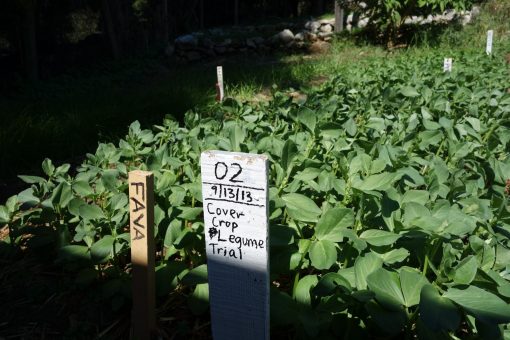
Recent research now recommends planting a mixture of grasses and legumes. Annual cereal grasses such as oats, rye and barley germinated quickly to hold and shield the soil until the legumes take hold. Bell beans, fava beans and vetch, which are the best legumes for our area, grow slowly the first 3 months then take off growing 70-80% in the last 3 months. The ratio of grass seed to legumes can vary from 10% to 30%.
There are other legumes that fix nitrogen but nowhere near as efficiently as bell beans. Crimson clover seed is more expensive, needs lots of water to sprout and competes poorly with weeds. Mustard causes competition with the fruit trees as bees will concentrate on the mustard flowers instead of the fruit tree flowers.
Work the soil lightly with a metal bow rake then broadcast 8-10 seeds per square foot. Weeds should be already cleared but this step doesn’t have to be perfect. Afterward the area should be raked again lightly 1-2 inches down and covered with 3-4 inches of straw. Wood chips would be fine, too. Mulch heavier if you have bird competition. Cover crops are vigorous and will come up through just about anything. Water in lightly.
If you plan to let your small vegetable garden lie fallow over the winter instead of planting it with a cover crop you can cover it with manure and straw.


